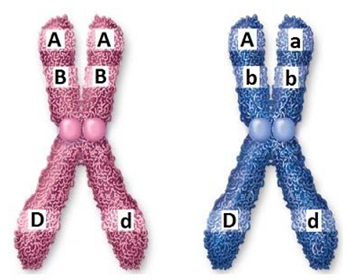With gene therapy being at the cutting edge of medical technologies, it is not surprising that serendipitous treatments are discovered. Explain how treating an HIV-positive patient with stem cells from an HIV-resistant donor cured him or her of HIV while
targeting his or her acute myeloid leukemia.
What will be an ideal response?
Using mutant CCR5 T cells in the stem cell transplant to treat Timothy Brown's leukemia, the HIV was not capable of spreading to the new T cells. This resulted in the decline of HIV-positive T cells and the eventual curing of his or her HIV.
You might also like to view...
A portion (location) of DNA that encodes a specific protein is a

Examine this image of chromosomes and identify the structural components.
A. kinetochore.
B. centromere.
C. chromatid.
D. chromosome.
E. gene.
A gymnosperm that produces a long taproot and only two leaves belongs to the genus Gnetum
____________________ Indicate whether the statement is true or false.
You have just read an advertisement for a new drug that claims people who take it can get muscular bodies without spending months lifting weights in the gym. The drug stimulates muscle growth in the same way that weight lifting does, which is to
A. turn surrounding connective tissue into muscle tissue. B. stimulate an increase in the proportion of slow-twitch muscle fibers. C. stimulate existing muscle fibers to fuse with one another. D. stimulate growth in the size of existing muscle fibers. E. stimulate existing muscle fibers to divide.
More fungal diseases are recognized than were known just a decade ago. For example, in 2012, hundreds of patients developed a meningitis caused by a fungus never before known to cause disease. What contributes to these emerging diseases?
What will be an ideal response?